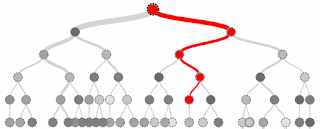A type safe way of creating Angular ReactiveForms and FormGroups
If, like myself, you prefer as many of your coding mistakes to be identified at compile time as possible then you might like the following example. The FormBuilder in Angular expects us to identify our FormControls with a string name. If ever the API of your server changes then of course the names of those controls will also need to change. So, rather than using magic strings when building a FormGroup I wrote this small utility class for building them against a strongly typed class by using lambda expressions. This routine uses a routine I blogged about recently ( Get lambda expression as a string) Take the following interface as an example of something we wish to edit in a ReactiveForm. interface Address { line1: string; line2: string; city: string; } The code to build the form would look like this this.form = this.expressionFormBuilder .createFormGroup<Address>() .addFormControl(x => x.line1) .addFormControl(x => x.line2) .addFormContro...
